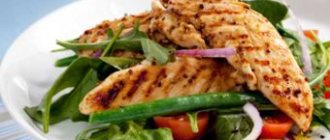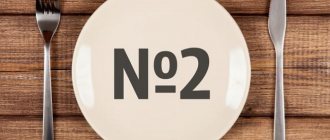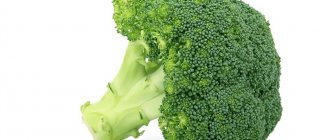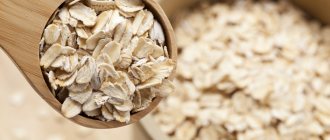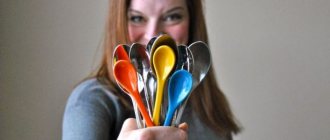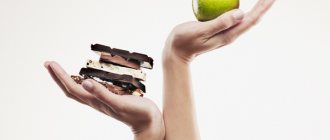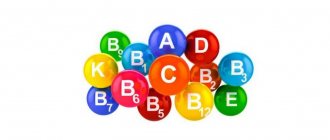Catering points have always been and remain popular. This is understandable, because not everyone has time to prepare culinary delights. Nevertheless, everyone wants to eat delicious food. It is worth noting that having golden hands for business is not enough, since the competition is too high. It may seem to many that it is impossible to make money with the help of a canteen. But most people prefer the classics when it comes to food, and that's worth a lot.
For catering enterprises, it is important to create food calculations in such a way as not to scare off customers with too high prices and at the same time not to work to their detriment. Let's look at how to make this calculation .
What is needed for calculation
In order to correctly calculate the calculation, you will need:
- Menu indicating the list of dishes.
- Technological map for each dish indicated in the menu.
- The purchase price of all products needed for cooking.
Let's look at each of these points.
Menu
When choosing dishes for the dining room, you should not go to extremes. Simple dishes should be presented here. In addition, calculating dishes with complex positions will become even more difficult.
Routing
This is a document that contains information about all the features of the prepared food , such as the timing and storage conditions of the dish, nutritional value, recipe with composition and cooking algorithm, requirements for serving and selling the finished product, appearance, portion weight.
Neglecting this document is unacceptable. You can purchase a ready-made technological map or create it yourself. The first option is quite expensive, and the second is not as complicated as it might seem at first.
Purchase price
Without this point it is impossible to calculate the calculation. It is advisable to add transport costs to them.
Features of calculating and serving banquet dishes
The celebration begins with snacks. They are served on common large dishes, taking into account the serving concept. Salads and appetizers are calculated based on the number of people at the table. They are rarely served in portions, since each person has their own taste preferences.
When preparing main dishes, meat or fish is used. Garnishes can include:
- baked or boiled potatoes;
- rice;
- fresh vegetables or grilled.
Before serving fish and meat dishes, empty dishes and dirty plates containing snacks are removed from the tables. If it's time for desserts, it means the event is coming to an end. The main sweet treats can be:
- portion of cake;
- cake;
- mousse;
- fruit jelly.
There are also fruits on the tables. It can be sliced or salad.
When calculating the menu, we must not forget about bread. Many people are accustomed to eating snacks and main courses with baked goods. Their quantity is calculated taking into account generally accepted standards: 150 g of bread is enough for 1 person.
A banquet also requires sauces and seasonings. They are served in common special dishes. For 10 people you should put 1 gravy boat and 1 salt pan.
How to do calculations manually
Having all the necessary data described above, you need to make a list of the necessary products for preparing the dish, indicate their quantity, and the purchase price. All data can be entered into the appropriate calculation card of form OP-1 (samples of cards, as well as the form itself, can be found on the Internet). And sum it all up. This way you can calculate the cost of the dish. It is worth noting that the calculation is based on 1, 100 servings.
Let's give an example of calculating one portion for chicken Kiev.
For this dish you need:
- peeled chicken fillet - 29.82 g: 1 kg - 180 rubles, total 5.37 rubles;
- butter - 14 g: 1 kg - 240 rubles, total 3.36 rubles;
- eggs - 3.27 g: 1 kg - 120 rubles, total 40 kopecks;
- white bread - 8.88 g: 1 kg - 60 rubles, total 53 kopecks;
- cooking fat - 5.21 g: 1 kg - 80 rubles, total 42 kopecks.
We added it up, and it turns out that the cost of 100 g of chicken Kiev is 10 rubles. 9 kopecks The same calculation principle is used for any other food and drinks.
Recipe Caesar Salad 1 serving (~190g). Calorie, chemical composition and nutritional value.
Nutritional value and chemical composition of “Caesar Salad” 1 serving (~190g).”
The table shows the nutritional content (calories, proteins, fats, carbohydrates, vitamins and minerals) per 100 grams of edible portion.
| Nutrient | Quantity | Norm** | % of the norm in 100 g | % of the norm in 100 kcal | 100% normal |
| Calorie content | 193.3 kcal | 1684 kcal | 11.5% | 5.9% | 871 g |
| Squirrels | 12.2 g | 76 g | 16.1% | 8.3% | 623 g |
| Fats | 12.9 g | 56 g | 23% | 11.9% | 434 g |
| Carbohydrates | 7.5 g | 219 g | 3.4% | 1.8% | 2920 g |
| Organic acids | 0.1 g | ~ | |||
| Alimentary fiber | 0.4 g | 20 g | 2% | 1% | 5000 g |
| Water | 64 g | 2273 g | 2.8% | 1.4% | 3552 g |
| Vitamins | |||||
| Vitamin A, RE | 162.8 mcg | 900 mcg | 18.1% | 9.4% | 553 g |
| beta carotene | 1.12 mg | 5 mg | 22.4% | 11.6% | 446 g |
| Vitamin B1, thiamine | 0.108 mg | 1.5 mg | 7.2% | 3.7% | 1389 g |
| Vitamin B2, riboflavin | 0.103 mg | 1.8 mg | 5.7% | 2.9% | 1748 g |
| Vitamin B4, choline | 48.31 mg | 500 mg | 9.7% | 5% | 1035 g |
| Vitamin B5, pantothenic | 0.549 mg | 5 mg | 11% | 5.7% | 911 g |
| Vitamin B6, pyridoxine | 0.259 mg | 2 mg | 13% | 6.7% | 772 g |
| Vitamin B9, folates | 23.068 mcg | 400 mcg | 5.8% | 3% | 1734 g |
| Vitamin B12, cobalamin | 0.343 mcg | 3 mcg | 11.4% | 5.9% | 875 g |
| Vitamin C, ascorbic acid | 5.86 mg | 90 mg | 6.5% | 3.4% | 1536 g |
| Vitamin D, calciferol | 0.164 mcg | 10 mcg | 1.6% | 0.8% | 6098 g |
| Vitamin E, alpha tocopherol, TE | 3.719 mg | 15 mg | 24.8% | 12.8% | 403 g |
| Vitamin H, biotin | 4.876 mcg | 50 mcg | 9.8% | 5.1% | 1025 g |
| Vitamin K, phylloquinone | 20.9 mcg | 120 mcg | 17.4% | 9% | 574 g |
| Vitamin RR, NE | 4.7703 mg | 20 mg | 23.9% | 12.4% | 419 g |
| Macronutrients | |||||
| Potassium, K | 175.96 mg | 2500 mg | 7% | 3.6% | 1421 g |
| Calcium, Ca | 178.76 mg | 1000 mg | 17.9% | 9.3% | 559 g |
| Magnesium, Mg | 42.5 mg | 400 mg | 10.6% | 5.5% | 941 g |
| Sodium, Na | 528.46 mg | 1300 mg | 40.7% | 21.1% | 246 g |
| Sera, S | 102.78 mg | 1000 mg | 10.3% | 5.3% | 973 g |
| Phosphorus, P | 150.4 mg | 800 mg | 18.8% | 9.7% | 532 g |
| Chlorine, Cl | 356.93 mg | 2300 mg | 15.5% | 8% | 644 g |
| Microelements | |||||
| Bor, B | 27.1 mcg | ~ | |||
| Iron, Fe | 1.346 mg | 18 mg | 7.5% | 3.9% | 1337 g |
| Yod, I | 3.32 mcg | 150 mcg | 2.2% | 1.1% | 4518 g |
| Cobalt, Co | 6.381 mcg | 10 mcg | 63.8% | 33% | 157 g |
| Manganese, Mn | 0.1545 mg | 2 mg | 7.7% | 4% | 1294 g |
| Copper, Cu | 75.25 mcg | 1000 mcg | 7.5% | 3.9% | 1329 g |
| Molybdenum, Mo | 2.42 mcg | 70 mcg | 3.5% | 1.8% | 2893 g |
| Selenium, Se | 4.429 mcg | 55 mcg | 8.1% | 4.2% | 1242 g |
| Fluorine, F | 52.36 mcg | 4000 mcg | 1.3% | 0.7% | 7639 g |
| Chromium, Cr | 4.59 mcg | 50 mcg | 9.2% | 4.8% | 1089 g |
| Zinc, Zn | 1.2115 mg | 12 mg | 10.1% | 5.2% | 991 g |
| Sterols (sterols) | |||||
| Cholesterol | 12.2 mg | max 300 mg |
The energy value of Caesar Salad 1 serving (~190g) is 193.3 kcal.
Primary Source: Created in the application by the user. Read more.
** This table shows the average levels of vitamins and minerals for an adult. If you want to know the norms taking into account your gender, age and other factors, then use the “My Healthy Diet” application.
Using spreadsheets and programs
It is irrational to calculate the cost of a dish each time manually. Therefore, it is very convenient to use spreadsheets, such as Microsoft Excel. In this program, you can create a template that will contain all the products necessary for cooking, write down a calculation formula and, if the purchase price changes, make the necessary adjustments.
If you plan to use automated accounting, for example, using the 1C Public Food program, then everything is even simpler. Almost all trading programs have a “dish calculation” function . You can enter not only current purchase prices into it, but also track the movement and write-off of products.
In 1C, the main document for calculating costing is the “Recipe”. It will contain the usual details. The tabular section will contain a list of necessary ingredients for the dish in accordance with the nomenclature. It will be necessary to enter data in the “Gross” column, calculate the percentage of loss for different processing methods and the yield of ingredients after it. You can also enter analogues and replacements for components.
You can enter information on the preparation technology and chemical-energy characteristics into the document.
Thanks to 1C Public Food, you can keep track of complex dishes and create a “Recipe” of several levels. For those dishes in which it is possible to vary the quantitative content of ingredients, there is a document “Processing Act”. It will indicate the quantitative indicators of the components several times and calculate the average value. Based on this data, a “Recipe” will be generated, which will automatically be generated into a standard card for calculation OP-1.
Myslo checked the school canteen menu
The editors had at their disposal a menu plan for the cafeteria of one of the Tula schools. It was provided to us on condition of anonymity. We compared it with the diet offered by Rospotrebnadzor. The results are shocking!
For example, on Thursday, students are offered an interesting combination of dishes for breakfast: pickled cucumbers along with cocoa and milk. This is the start of the day! Such a breakfast can cause fermentation in the stomach, and sometimes poisoning.
Children are simply deprived of the necessary nutrients, because they are given 50 grams of sausage and 100 grams of rice and those same pickles with cocoa and milk.
Let's look at the lunch menu.
| According to Rospotrebnadzor standards (in grams) | Real lunch that is prepared for children (in grams) | ||
| Cabbage salad with vegetable oil | 60 | White cabbage salad | 50 |
| Pickled cucumbers (additional food) | 10 | Pickled cucumbers (additional food) | 10 |
| Potato soup with pasta in meat broth | 200 | Potato soup with pasta | 200 |
| Boiled sausage | 100 | Boiled sausage | 50 |
| Boiled pasta with butter | 180/5 | Boiled pasta | 100 |
| Fruit and berry jelly with vitamin C | 200 | Fruit and berry jelly with vitamin C | — |
| Iodized rye bread | 60 | Rye bread 35 | 35 |
The volume of the soup is as expected - 200 grams. But! Students will receive vegetable soup, and the first course should actually be made with meat broth. They didn't deliver 10 grams of salad, they gave us almost half as much bread. The side dish portion has also been reduced by 80 grams (almost half). The volume of the drink offered is not specified.
We weighed the rice and cutlet: 56 g and 48 g instead of the required 150 g and 80 g
We found similar deviations in the menu for other school days.
Note that the menu components seem to be similar to those established by Rospotrebnadzor, well, with the exception of the “cucumbers + milk” set. But the portions, at the request of Rospotrebnadzor, should be clearly larger. Let us note that according to the Rospotrebnadzor menu, the side dish must be served with butter, which is rarely reflected in the menu of Tula schools.
The portion is more suitable for Thumbelina than for a second grade student. We put in five rubles to estimate the size of the cutlet.
School canteen menus are a science. Everything must be balanced! This is why pediatricians recommend that students eat in educational institutions.
Each school has two options for organizing meals for children:
- Prepare food directly at school.
- Conclude a contract with an enterprise: municipal or private. It will supply food to schoolchildren.
In Tula, most schools are supplied with hot meals by food factories. They are the ones who set and coordinate with the heads of educational organizations the menu for 10 days. Naturally, there are standards: every year the regional department of Rospotrebnadzor approves a sample menu. It spells out everything down to the smallest detail: the weight of the dishes, their energy value, the content of vitamins and minerals.
The recommendations of this department are not always followed. We deliberately do not name the number of the school whose menu is described above.
We forwarded parents' complaints about poor nutrition to the Tula Region Prosecutor's Office, which will soon conduct an investigation.
The listed deviations from the menu established by Rospotrebnadzor, which we discovered, are violations “on paper”. What's it like in reality? The mother of a student at educational center No. 19 (formerly school No. 8) brought to our editorial office a portion of food that her child was offered for lunch. "I'm shocked! Do you think the child will get enough of this lunch?!” — the woman was indignant. She weighed the children's lunch: cutlet 48 g, rice - 56 g. At the same time, the minimum recommended portion of cutlet is 80 g, and rice - 150 g. In addition, for lunch, as the child of our reader said, they were given cabbage soup, compote and black bread (his children can take without restrictions). Note that in the menu developed by Rospotrebnadzor, in addition to the first and second courses, lunch should include a vegetable salad.
Where to complain
The problem of nutrition in Tula schools is not widespread. This was stated by the Minister of Education of the Tula Region Oksana Ostashko
October 6 during a direct line with residents of our region.
Oksana Ostashko
The problem is that parents complain but do not say where they are from or what school their children attend. With regard to control over the organization of catering, of course, first of all, responsibility lies with the heads of educational institutions, as well as with the medical worker who is assigned to the educational organization. No need to be shy. If parents have any doubts, they need to tell the class teacher, the deputy in charge of this issue, or the director. If there are blatant cases, we are ready to accept appeals from the Ministry of Education of the Tula Region.
According to the minister, perhaps the child simply does not like the food offered at school. Then parents need to monitor the nutritional culture of their children. But as for the temperature, the volume of portions, the range of products used to feed children, here, of course, according to the minister, it is necessary to respond.
Healthy diet
Schoolchildren 7-11 years old should receive 70-80 g of protein per day, or 2.5-3 g per 1 kg of weight, and students 12-17 years old - 90-100 g, or 2-2.5 g per 1 kg of weight . The student must eat at least four times a day, and there must certainly be a hot dish for breakfast, lunch and dinner. For a growing body, milk, cottage cheese, cheese, and fermented milk products are required - sources of calcium and protein.
We asked the chief specialist of the Institute of Health, Maria Volkova, to compare the menu of school No. 49 and the menu of Rospotrebnadzor. We took Thursday's menu as an example.
School menu: squash caviar (10 g), beet salad with vegetable oil (50 g), potato soup with legumes (200 g), home-style roast (125/25 g), tea with lemon and sugar, rye bread ( 35 g).
Rospotrebnadzor menu: canned corn (10 g), beet salad with vegetable oil (60 g), potato soup with pasta in meat broth (200 g), Stroganoff liver with sauce (80/30 g), buckwheat porridge with cream butter (150/5 g), raisin compote with vitamin C, iodized rye bread (60 g).
Maria Volkova
Both options contain animal protein: 125 g roast/80 g liver and meat broth. The child will receive essential amino acids in full in any case. The muscle fiber from the roast will provide more satiety than the soft fiber from the liver. However, maximum satiety from muscle protein occurs in combination with a side dish (cereals, potatoes, etc.), in the first case, vegetables as a side dish, which may not be enough. Both soups contain carbohydrates and proteins. In terms of filling the soup with essential amino acids, legumes are inferior to meat broth, but if a child eats a piece of meat after soup, he will receive all the necessary proteins. 60 g of vegetable side dish is, in principle, not enough for a healthy digestive system. A minimum of 100 g is desirable. Both diets contain large amounts of carbohydrates. A child and a teenager need more carbohydrates than an adult, but in both cases there are a lot of them, and in the second there are almost three times more than in the first. You can safely reduce the amount of carbohydrates and increase the portion of vegetables.
specialist comment
We learned from the head of the Tula education department, Tatyana Zolotova, how the school canteen is organized.
Tatiana Zolotova
– Outsiders, including parents (legal representatives) of students, cannot freely visit the catering department of a general education institution. The quality of catering for parents can be checked by taking part in a documentary check of catering in a general education institution. Parents (legal representatives) can try the food that their children are fed by purchasing a set lunch at the canteen buffet (paying its cost).
All food products supplied to the catering department comply with the hygienic requirements for food raw materials and food products, and are accompanied by documents certifying their quality and safety, indicating the date of production, terms and conditions of storage of the products. The accompanying document is retained until the end of the product sale. To control the quality of incoming products, rejection is carried out and an entry is made in the rejection log of food products and food raw materials.
In accordance with clause 14.6. SanPiN 2.4.5.2409−08, ready-made food is issued only after a sample has been taken. The quality of food is assessed by a screening commission consisting of at least three people: a medical worker, a catering worker and a representative of the administration of the educational institution based on organoleptic indicators (the sample is taken directly from the containers in which the food is prepared). The result of the rejection is recorded in the “Journal of Rejection of Finished Culinary Products”. The weight of portioned dishes must correspond to the yield of the dish indicated in the layout menu. If the cooking technology is violated, or if the dish is not ready for delivery, it is not allowed until the identified culinary deficiencies are eliminated. In case of any complaints regarding the organization of catering in a general education institution, you must contact directly the director of the general education institution, the education department of the Tula city administration.
Main stages of calculation
Calculation is carried out in accordance with the following procedure:
- Determining the list for which the cost estimate will be compiled.
- In accordance with technological maps and a collection of recipes, investment rates for all components are calculated.
- Determination of purchase prices for the necessary components.
- The cost of raw materials is calculated: the amount of raw materials is multiplied by the selling price and summed over all items.
- In order to calculate the cost of raw materials for one dish, you need to divide the total amount by 100.
- To calculate the cost of selling a finished dish, it is necessary to increase the cost of raw materials by the amount of the trade margin as a percentage.
- The cost of selling a dish is calculated using the formula: a markup must be added to the total cost of raw materials.
The calculation card must be filled out in the following order:
- The “Products” column indicates all the components necessary to prepare the dish.
- In the “Unit of Measurement” column, pieces, grams, and kilograms are indicated.
- In the “Price” column, enter the selling price per unit of measurement.
- The number of products is entered into the “Gross” and “Netto” columns.
- In the “Amount” column there will be a calculation of the cost of individual types of products required to prepare 1,100 servings.
Thanks to calculations, you can track the profitability of certain positions, the need for new dishes or, conversely, the reduction of those that do not pay for themselves.
Preparation of non-alcoholic and alcoholic menus
There are drinks for everyone and the main group. The first include:
- cognac;
- Martini;
- liquor;
- whiskey;
- gin.
The main alcoholic drinks are: vodka, wine, champagne. How to calculate their number per person? Take into account generally accepted standards:
- vodka – 250 ml;
- wine – 750 ml;
- champagne – 250 ml.
Now about soft drinks. For a banquet they buy mineral water (usually still), juice, and fruit drink. Ready-made products can be replaced with compote or broth. There are no set limits for soft drinks per person. As a rule, 0.5 liters of water and the same amount of juice are enough for 1 person. When planning to have fun throughout the night, they buy 50–100% more mineral water.
